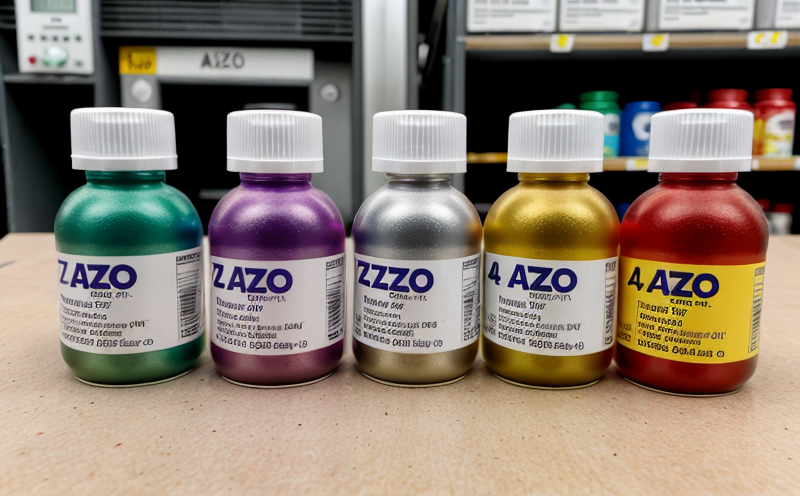EN 16711-1 Determination of cadmium content in textiles
The European Standard EN 16711-1 provides a method for the determination of cadmium in textiles. This standard is particularly important for ensuring compliance with regulatory requirements, especially those related to consumer safety and environmental protection. Cadmium can migrate from textile products into the environment or be ingested by consumers, leading to potential health risks. Therefore, this test ensures that textiles meet stringent quality and safety standards.
The process involves several steps including sample preparation, digestion, and measurement using atomic absorption spectroscopy (AAS). The standard specifies detailed procedures for these processes, ensuring accuracy and repeatability of results. Proper sample handling is crucial to avoid contamination and ensure reliable test outcomes. Sample preparation often includes soaking the textile in a suitable solvent followed by drying and ashing.
The digestion step is critical as it breaks down organic components to release cadmium into solution. This can be achieved using strong acids like nitric acid or perchloric acid, which must be handled with care due to their corrosive nature. After digestion, the sample is filtered to remove any insoluble residues before proceeding with analysis.
The measurement process typically employs atomic absorption spectrometry (AAS), which involves atomizing the sample and measuring its absorbance at a specific wavelength characteristic of cadmium. Calibration standards are prepared using known concentrations of cadmium to generate calibration curves, which allow for accurate quantification.
Absorption values obtained from the analysis are compared against these calibration curves to determine the concentration of cadmium present in the textile sample. Reporting results includes providing detailed information about the test method used, the specific standard applied, and the concentration levels found within acceptable limits as defined by relevant regulations like REACH or Oeko-Tex.
For accurate testing, it is essential that laboratories are accredited to perform this type of analysis according to EN 16711-1. Accreditation ensures adherence to strict quality control measures ensuring reliable and consistent results across different batches of samples processed by the lab.
| Sample Preparation | Digestion | Measurement Technique |
|---|---|---|
| Soaking in solvent, drying, ashing | Using nitric/perchloric acid for digestion | Atomic Absorption Spectroscopy (AAS) |
This table summarizes the key steps involved in the EN 16711-1 testing procedure. Proper execution of each step is vital to obtaining accurate and reliable results.
Why It Matters
The determination of cadmium content in textiles through EN 16711-1 is crucial for several reasons:
To comply with international regulations such as REACH and Oeko-Tex standards, which limit the permissible levels of heavy metals like cadmium.
To protect consumers from health risks associated with exposure to toxic substances.
To ensure product quality and maintain brand reputation by meeting consumer expectations for safe and environmentally friendly products.
To facilitate market access, as many countries require compliance with these standards before importing goods.
By conducting regular testing according to EN 16711-1, manufacturers can demonstrate their commitment to quality and safety, thereby enhancing customer trust and loyalty.
Scope and Methodology
| Scope | Methodology |
|---|---|
| Determines the concentration of cadmium in textiles. | Incorporates sample preparation, digestion using strong acids, followed by atomic absorption spectroscopy for quantification. |
The scope of this testing method encompasses various types of textile materials commonly used in clothing and home furnishings. The methodology outlined in EN 16711-1 ensures that all samples undergo rigorous examination to detect even trace amounts of cadmium. This approach helps identify potential sources of contamination early on, allowing for corrective actions before products reach the market.
The digestion process plays a critical role by ensuring complete breakdown of organic materials so that only metallic elements remain available for measurement. Properly executed digestion enhances precision and accuracy of subsequent analytical steps. Once digested, solutions are analyzed via atomic absorption spectrometry to quantify cadmium levels accurately.
International Acceptance and Recognition
The European Standard EN 16711-1 has gained widespread acceptance worldwide due to its robustness and reliability in determining cadmium content. Many countries have adopted this standard as part of their regulatory framework for textile products, recognizing the importance of ensuring consumer safety and environmental protection.
- European Union (EU): EN 16711-1 is widely used across EU member states to ensure compliance with REACH regulations.
- United States: While not officially adopted by U.S. standards bodies like ASTM or ANSI, many American companies choose to follow this standard for its stringent requirements and proven track record.
- China: Some Chinese provinces have started aligning their local standards with EN 16711-1 to harmonize practices internationally.
The consistent quality of results obtained from laboratories accredited according to EN 16711-1 contributes significantly to its global recognition. This accreditation guarantees adherence to strict quality control measures, ensuring reliable and reproducible test outcomes.





